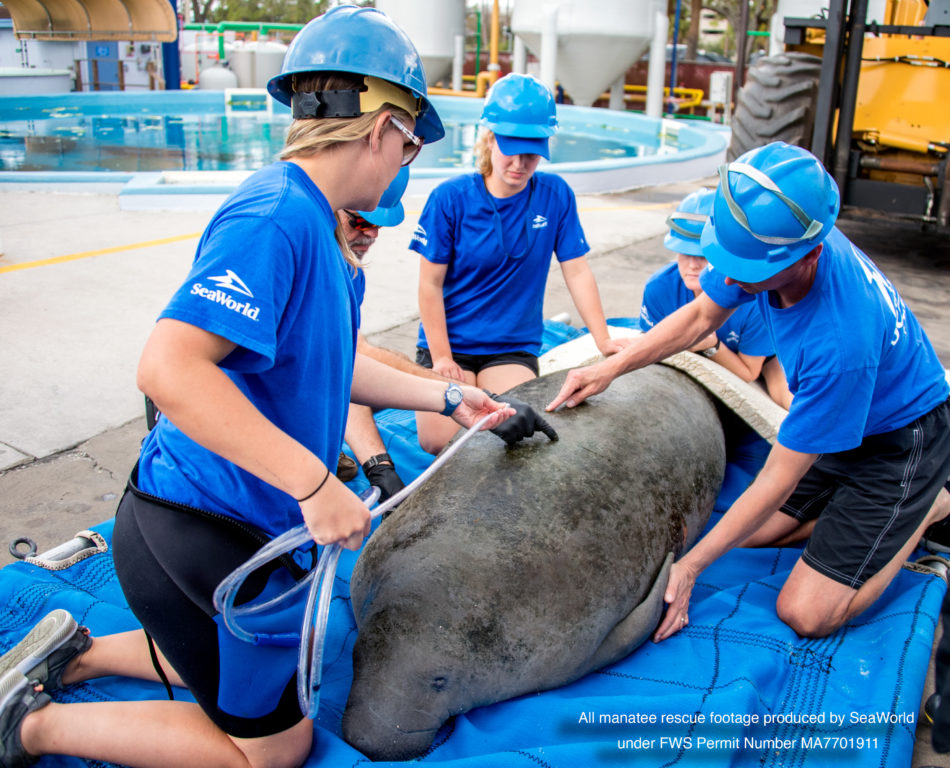SeaWorld Announces its 36,000th Animal Rescue

For 55 years, SeaWorld has been a leader in the rescue and rehabilitation of marine and terrestrial animals, having now rescued more than 36,000 animals since the first SeaWorld Park opened in 1964.
More important than the number 36,000 is SeaWorld’s commitment to protect and rescue animals in need. SeaWorld’s work supports a network of dedicated rescue experts, animal care specialists and veterinarians who work tirelessly to give ill, injured, orphaned or abandoned animals a second chance at life.
“SeaWorld’s work rescuing and rehabilitating wild animals is of the highest calibre and the reason why the rescue team has been a long-standing and valuable partner,” said Donna Wieting Director of NOAA Fisheries' Office of Protected Resources. “We also value SeaWorld’s mission to educate the public about marine wildlife conservation and the role they play in protecting animal habitats.”
One animal recently cared for by SeaWorld is Bingley, a male manatee. Bingley was rescued by the Florida Fish and Wildlife Conservation Commission (FWC) earlier this year and transported to SeaWorld Orlando for rehabilitation due to pneumothorax, an injury to the animal’s lung often caused by a boat strike. SeaWorld’s team of animal care experts and world-renowned veterinarians spent five months providing specialized care to Bingley before the FWC determined he could be released off the coast of Florida.
“Our teams remain on the frontlines of marine mammal rescue because of our enduring commitment to supporting rescue, rehabilitation and return,” said Jon (JP) Peterson, Senior Leader of Zoological Operations at SeaWorld Orlando. “In a perfect world, animals would never need to be rescued, but until that changes, our teams will continue to work closely with our partners to help save these animals.”
Other stories include Cinder and Tyonek; a northern sea otter pup and endangered baby beluga whale who were both orphaned and later rescued by the team at Alaska SeaLife Center. Once stabilized, Cinder was brought to SeaWorld San Diego where she is receiving around the clock care and Tyonek has a new home at SeaWorld San Antonio where he’s growing quickly.
Guests can make a difference and support the efforts of the SeaWorld Recue team when they visit any of the three SeaWorld parks in Orlando, Florida; San Diego, California; and San Antonio, Texas. Every SeaWorld ticket purchase helps fund the organization’s wildlife rescue and rehabilitation operations, habitat protections, and ocean health initiatives. To raise awareness for the importance of animal rescue and care, all three SeaWorld parks will host events this weekend (16-17 November) to give guests the opportunity to interact with animal rescue and rehabilitation team members and learn more about how animals are cared for at SeaWorld.
In additional to its animal rescue work, SeaWorld leads a broad conservation effort that makes significant contributions to marine animal research, education, and habitat protection. To date, SeaWorld and its Conservation Fund have supported more than 1,200 animal conservation projects on all seven continents, including coral reef restoration, preventing coastal erosion, habitat protection and keeping our oceans clean. And inside its parks, SeaWorld lives its conservation values in a number of ways, including the elimination of single-use plastic straws and coffee stirrers, plastic shopping bags and use of 100 percent recyclable dinnerware.



